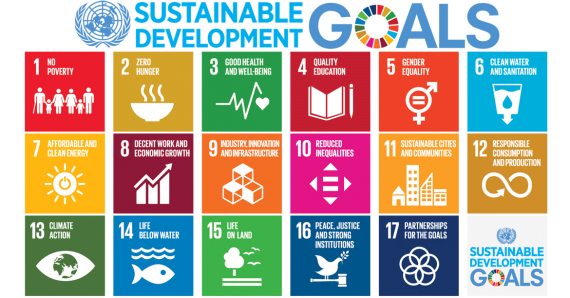“Ask not what your country can do for you — rather ask yourself what you can do for your country.”- JOHN F KENEDDY
Today, the world is a home to the largest generation of the important drivers of global change and innovation i.e. the youth, contributing about 43% of the global population. A temper of will, quality of imagination, predominance of courage, appetite for adventure makes this huge cohort a vibrant, constructive force which can address global issues and create a more just, equitable and a peaceful world. The empowered youth from diverse backgrounds like food to fashion to finance are the forerunners of assessment, awareness, action and advocacy for sustainable development.
They are the main stakeholders, policy makers, powerful resource in handling responsibilities, revolutionizing fellow men and a catalyst for change. “As the young leaders of tomorrow, you have the passion, energy and commitment to make a difference. What I’d like to really urge you do is to have a global vision. Go beyond your country; go beyond your national boundaries.” -Ban Ki-moon, UN Secretary-General Sustainable development is an overarching paradigm of the United Nations. This concept was described by the 1987 Brundtland Commission Report as “development that meets the needs of the present without compromising the ability of future generations.” Thus, it envisages a future agenda that balances the four pillars i.e. social, economic, cultural and environmental objectives.
Through a wide process, UN Sustainable Development framework consisting of 17 Goals and 169 interlinked Targets within these Goals are framed in an ambitious, pragmatic and concrete way to renew and integrate efforts to meet the national and global aspirations in a defined time frame by 2030. The vision involves social sphere like gender equality, education and health, economic issues like growth, infrastructure and sustainable consumption, environment through climate change and peaceful partnerships for sustainable development. The youth is disproportionately affected by the world’s challenges. Gender inequality, poverty, illiteracy, terrorism, unemployment and pandemics are a concern. Some 3,000 young people are infected with HIV and other diseases each day. Young women face violence and discrimination.
Various environmental challenges such as climate change, solid waste management, deforestation, global warming, political instability, degradation of ethics, rapid industrialization, unplanned urbanization, inability to employ costly eco-friendly technologies, lack of awareness are the problems in the developing countries like India. “No one knows better than youth, the issues at stake or the best way to respond. That is why I am calling on young people to speak out – and urging leaders to listen.” – Ban ki Moon It’s the dire need to tackle these huge challenges by promoting the rights and aspirations and increasing the participation of youth in decision making. “Give me just one generation of youth, and I’ll transform the whole world.” – Vladimir Ilyich Lenin Mother India, a young nation, has 250 crore arms and 200 crore of those arms are younger than 35.
They are brought up with the ideology of Gandhiji – “Be the change you want to see in your country” to make India a strong and self-reliant nation. Youth act as critical thinkers with their energy, voice and actions. They have the capacity to identify and challenge the existing powers and expose the barriers to change. Being good communicators to their peers and communities at the grass root level, they make people aware and knowledgeable of the goals for active transition from MDG to SDG. They are an effective force by suggesting alternative concrete solutions through right to vote and encouraging people to advocate change in the political decisions. Youth voice matters!! The dream of a ‘Green Prosperous India’ relies heavily on its empowered youth who are responsible social actors with the focus on “education for sustainability and not about sustainability”. Environmental practices like Swacch Bharat Abhiyan, green initiatives like “Each one, plant one”, environmental Camps such as CLEAN-India, Namami Ganga Plan and Ganga River Basin Management Plan and youth forums like Youth ki Awaz aim to reduce consumption and eliminate waste.
Organizing events and intercollegiate competitions with posters, slogans and informative skits and promotion of such events in social media and Raahgiri with observation of Earth Day and Environment Day can engage the society. “Each One Teach One” program where each student imparts Disaster preparedness and eco friendly strategies to mitigate climate change to at least one individual of the society. Youth activism bolstered by broader connectivity and social media, exposure to technology and instant communication has made the world a global village. This offer an accountable platform for sharing knowledge and eliminating pandemics. The electronic transmission of government services like The Digital India campaign, portals such as ‘mygov.in’, Chai Pe Charcha has brought government and citizens closer by educating the older generation. Former President Dr. Zakir Hussain stated that, “Youth form the vanguard of the nation, which when properly channelized shall be instrumental for the development of the country”. With youth, comes vibrancy, and optimism. Yet a failure to invest, can lead to energy turned in destructive rather than constructive directions. In India, the magnitude of the SDG demands a strong policy that is inclusive, participatory, gender-responsive, comprehensive, knowledge-based with priorities to education, health and employment.
A world of justice where girls can grow up with the respect and dignity, free of fear of abuse and where poverty is not acceptable. A Modern Youthful India!!! MY DREAM INDIA India where Poverty and Illiteracy are history, Agriculture and Health work in symphony, Women and Children live in harmony, Wildlife, Heritage and Technology live with integrity. Unify. Don’t live with destiny.
Author: Dr. ARPITA SUBHADARSHINEE
Write and Win: Participate in Creative writing Contest & International Essay Contest and win fabulous prizes.











